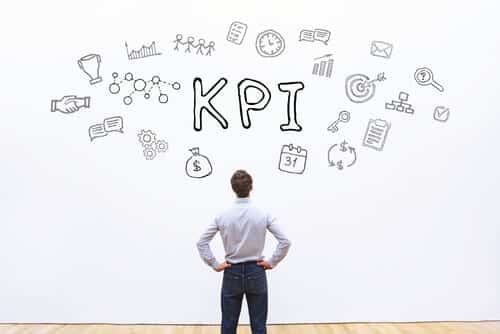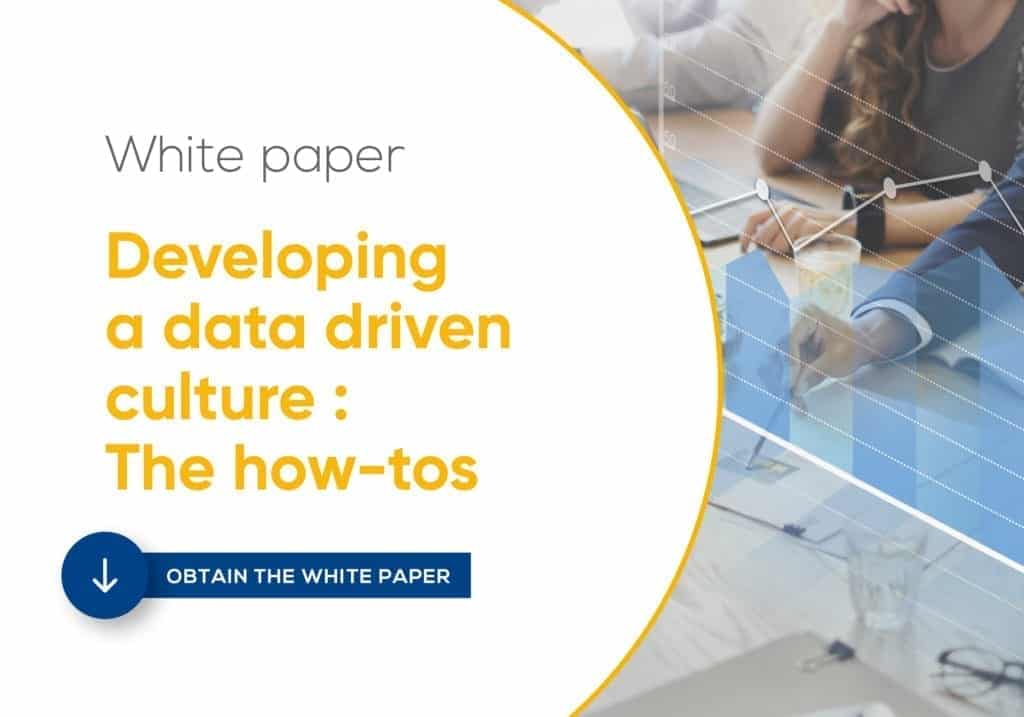All companies produce and exploit data. But do they do it correctly? Is the data useful? Does all the data make sense? Is the data used correctly and communicated to your teams? In other words, are you improving your productivity or are you wasting time and energy? In this article, we outline our vision for the data driven culture by helping you to give meaning to your data.
Too many indicators drown the useful indicator
 It is possible to give meaning to any information. Some people reassure themselves by monitoring hundreds of indicators and to provide the illusion that everything is under control. Often, the opposite is true. Too many indicators drown the useful indicator. A KPI must be aligned with an objective and the overall strategy of the company. It is therefore very important to choose only a handful of indicators to monitor. The perimeter around which these indicators are built is also important. They will not have the same meaning at the company level as in a business area. Your KPIs determine the message that you would like to communicate!
It is possible to give meaning to any information. Some people reassure themselves by monitoring hundreds of indicators and to provide the illusion that everything is under control. Often, the opposite is true. Too many indicators drown the useful indicator. A KPI must be aligned with an objective and the overall strategy of the company. It is therefore very important to choose only a handful of indicators to monitor. The perimeter around which these indicators are built is also important. They will not have the same meaning at the company level as in a business area. Your KPIs determine the message that you would like to communicate!
Take care then in choosing your data. Do not try to use all the data available to you, the scope is just too great. The objective is to focus on operational excellence and collective intelligence. Do not overload the system with information of little value! Avoid therefore simplistic traffic light indicators: Positive in appearance, they may conceal some negatives when studied more closely. They may lead you astray and result in poor decisions.
Giving meaning to data From paper to digital
 Now that you have identified the indicators to monitor with your work group, it is time to communicate them to your teams. If you have an idea which seems to be innovative and efficient: display it on your wall. You have thought of everything: Using coloured paper by type of KPI and project progress, updating indicators every week, using these sources for team briefings … Unfortunately, data will be out of date! In the digital era, information is displayed in real time to be shared and used by teams. How do you expect to coordinate and motivate your teams with paper-based information which will be obsolete as soon as it is printed?
Now that you have identified the indicators to monitor with your work group, it is time to communicate them to your teams. If you have an idea which seems to be innovative and efficient: display it on your wall. You have thought of everything: Using coloured paper by type of KPI and project progress, updating indicators every week, using these sources for team briefings … Unfortunately, data will be out of date! In the digital era, information is displayed in real time to be shared and used by teams. How do you expect to coordinate and motivate your teams with paper-based information which will be obsolete as soon as it is printed?
This approach does not make the most of visual management. Your teams will pay attention at the beginning but will soon realise that data are not up to date and no longer relevant. And consider those people who telework who will not have access to this information at all. Difficult to federate your teams around such a tool. And you may soon find it difficult to keep your indicators up to date; your efforts will thus be in vain. And, of course, this may tarnish your brand image with customers and suppliers.
By favouring a digital solution, you avoid the problems of updating data, updating KPIs and displaying the results to your teams. Your system is therefore more flexible. The display format (graphical, maps, percentages …) allows you to vary the meaning and usability of your data and to formulate your message depending on the target audience. And your indicators will change over time, it is important that your teams follow these changes, thus providing added value and meaning to the information provided.
And finally you will be able to use screens for team meetings (ritual QRQC to monitor and comment on action plans), provide your teams with at-a-glance information on activity in their business area and on overall company performance.
There is no point displaying indicators and numbers without using them to coordinate activity. As your role changes to one of supporting your teams, your attitude must change to help your teams express their ideas for improvement. It is therefore important to choose the data and indicators appropriately, to comment on and illustrate their meaning both at the company and business area levels. If you would like to find out more, do not hesitate to contact us!




